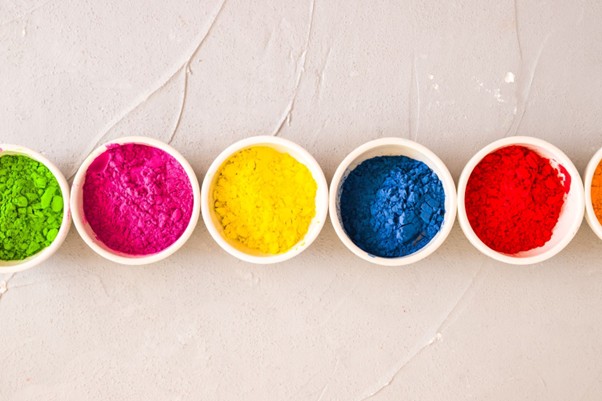
- By tanmaygoyal56
- January 6, 2025
- No Comments
Acid Dye
Acid Dye
Acid Dyes: What Are They?
One type of dye that functions well in an acidic environment is called an acid dye. They are mostly used to dye synthetic Fibers like nylon and protein-based Fibers like wool, silk, & alpaca. These dyes provide vibrant, long-lasting Colors that endure over time by chemically bonding with the Fibers.
Why Choose Acid Dyes?
It is well known that acid dyes can create:
- Vibrant and Bright Colours: They produce strikingly vibrant hues.
- Uniform Dyeing: Acid dyes can produce an even and consistent Color when used properly.
- Versatility: Fits a variety of Fibers, including synthetic and natural ones.
- Durability: They have good stain and fade resistance.
Acid dye types
Acid dye types are divided into three primary groups according to their characteristics and uses:
- Acid Dyes Levelling
- Perfect for attaining uniform Coloring.
- Ideal for uses in which wash rigidity is not a top priority.
- Grinding Acid Dyes
- made with a medium wash fastness in mind.
- Ideal for accessories and clothing made of wool.
- Super-Milling Dyes for Acid is
- renowned for having outstanding wash fastness.
- Frequently applied to goods like upholstery and carpets that need to be extremely durable.
( Acid Dyes Manufacturer in India )
How Acid Dyes Are Used
Although using acid dyes is a simple technique, the best results require careful attention to detail. Here is a detailed guide:
Get Your Fabric Ready
- To get rid of any oil or grime, wash the fabric.
- Before dying, make sure it is moist.
- Get the dye bath ready.
- The dye should dissolve in warm water.
- For the necessary acidic environment (pH 4-5), add a weak acid, like vinegar or citric acid.
The Dyeing Process
- The cloth should be immersed in the dye bath.
- For the best dye absorption, heat the bath to 85–95°C (185-203°F).
- To guarantee uniform dye distribution, stir constantly.
Rinse, then finish.
- Rinse the fabric extensively using warm water once the desired Color has been achieved.
- If required, apply a fixative to improve wash fastness.
Uses for Acid Dyes
Applications for acid dyes are numerous and include:
- Fashion: Dyeing silk scarves, nylon stockings, and wool clothing.
- Crafts: Making original patterns for knitting or carrying projects out of yarn and cloth.
- Industrial Use: Dyeing upholstery and carpets that need bright, durable hues.
- Scientific Research: Colouring pages for analysis and microscope.
Advice on Using Acid Dyes Successfully
- Before dying the entire fabric, always perform a patch test to verify the Color.
- For even results, keep the pH and temperature constant.
- When working with dyes, wear protective gloves in an area with good ventilation.

Acid dye properties include:
Water-Soluble: Acid dyes work well for dying in aqueous solutions since they dissolve readily in water.
- Vibrant Colours: They are renowned for creating Colors that are both vivid and lively.
- Affinity to Protein Fibres: Synthetic Fibers like nylon and protein-based Fibers like wool, silk, and alpaca are the greatest candidates for acid dyes.
- Good Fastness: Although the fastness varies depending on the Fiber and dye, they provide respectable wash and light fastness.
- Preparation: To guarantee uniform absorption, the clothing is soaked and ready.
- Acid Addition: To produce a pH that is acidic (around 4-5), a weak acid, such as citric or acetic acid, is added to the dye bath.
- Heating: To enable the dye to adhere to the Fibers, the bath with the dye is heated.
- Rinsing: To get rid of any leftover Color, the fabric is thoroughly rinsed after dying.
- Uses: Dyeing textiles and clothing made of wool.
- Silk ties and scarves can be Colored.
- Dyeing hosiery and other nylon and its fabrics.
- Crafts and art projects that use materials derived from proteins.
(Acid Dyes on Polyester)
Benefits
- Generates consistent, vibrant Colors.
- In water-based solutions, it is simple to utilize.
- Ideal for a wide range of industrial and artistic uses.
Cons:
- During dyeing, careful pH control could be necessary.
- Restricted use of non-protein Fibers that aren’t chemically processed.


